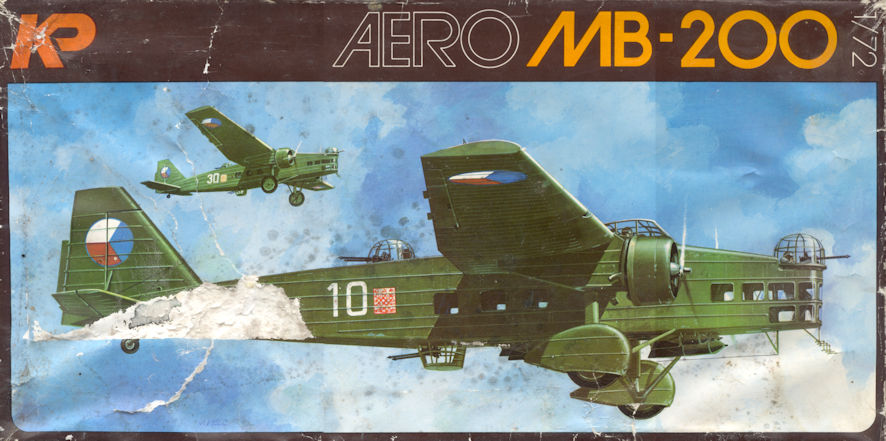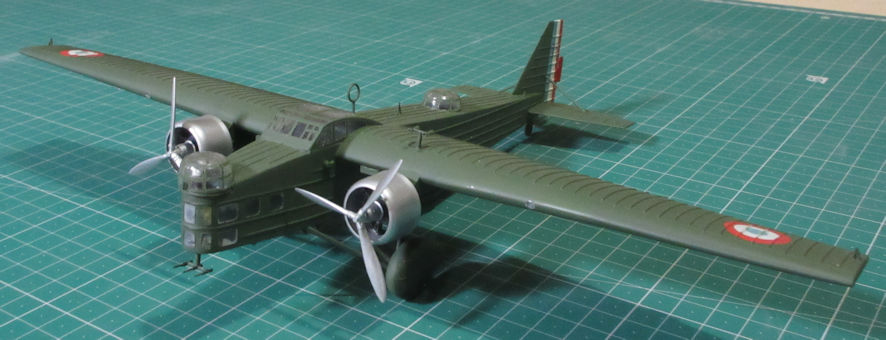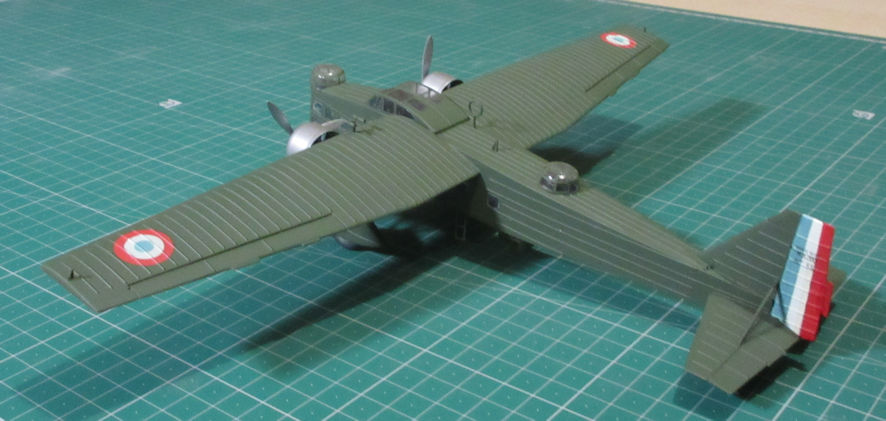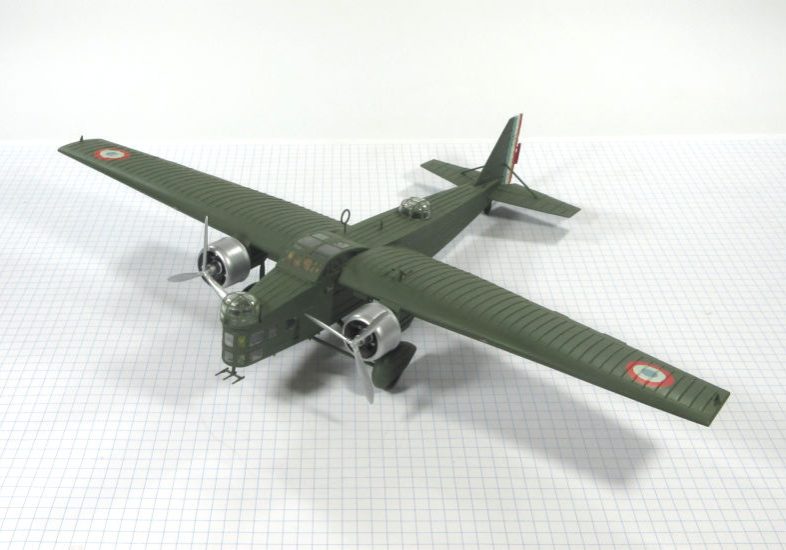In 1932 the French Air Ministry issued specifications for a five-seat night bomber and received eight proposals from five companies. The Bloch design for an all metal cantilever high-wing monoplane was selected as the principal bomber in the four seater class for the Armée de l’Air (the Farnam design was also selected to fill a different role) and the MB 200 became by far the most important Marcel Bloch’s (later Dassault) early products. Three prototypes were ordered and the first made its maiden flight in June 1933. The following December an initial batch of 30 production bombers were ordered, only 4 being produced in the Bloch factory, the rest being made by Potez.
The first production Bloch was flown in July 1934 and twenty had been delivered to the Armée de l’Air by the end of the year. By the end of 1935 they equipped 12 bomber squadrons and 208 were eventually delivered to the French air force. At the beginning of World War II ninety-two remained in service but, by the time of the German offensive, all had been relegated to training roles.
In 1935 Czechoslovaka sought a modern bomber design that could be manufactured in its relatively unsophisticated factories and selected the MB 200. One French example was sent to Czechoslovakia and a further 124 were constructed locally to serve with the Czech air force. When the Germans occupied Czechoslovakia they took some MB 200s straight from the production line for the air forces of Bulgarian and Roumania.
After Germany occupied France they offered seven MB 200 to Finland where the were used for transport and ambulance duties. The MB 200 was slow, reliable and viceless, a modern aeroplane when it was designed but obsolete by the second half of the 1930s due to rapid developments in military aeronautics.

I was astounded when I happened across this kit at a swap meet because I had no idea the aeroplane had existed, let alone that there was a kit of it. I’ve never seen it in the shops so it must have been out of production for a long time. (I recently picked up a second kit at another swap meet so I may be able to help you for the right price if you really have to make one – and why not, it is an interesting model from an interesting period and, of course, it’s French.) The kit is made by KP but the style in which it is designed reminds me of several early Heller kits so I’m not convinced that it didn’t have an earlier life in France.
I always approach kits of French bombers with trepidation, mainly because they have such vast areas of perspex that can be very difficult to get right. This is because there are a couple of problems/challenges; one is getting the clear plastic to fit properly into the little holes provided for them and the other is the amount of masking that has to be done when all the plastic has been fixed firmly in place, sanded level and polished up with Brasso. (I saved the masking for the MOB’s big day out and spent a couple of hours there fiddling with tiny strips of masking tape and finally completed the project at 12.30 that evening.) Apart from those difficulties there is another major problem/challenge with this kit that anybody who has made a Ju53/3m will know all about, how to make the four slab sides fit neatly without damaging any of the corrugations with any filling, filing or rogue dabs of glue, filler or paint.
Another problem/challenge in making this kit is finding out very much about the MB 200 and good photographs and drawings to work by. By far the best drawings of the aeroplane I could find come on the fairly comprehensive instruction sheet and decent photographs are very scarce, even on the internet. The kit box says that the model is of the Czech version of the MB 200 which, so far as I can tell, was almost identical to the original design. However, I couldn’t find anything to check that with. The instruction sheet is very comprehensive with exploded drawings of each stage in construction but, even so, there are occasions when they are fairly vague about the exact location of a few little pieces.
Apart from all that, construction is fairly straight forward because the MB 200 was a fairly simple aeroplane. There are a myriad of tiny little bits and pieces like radio aerial posts, bomb crutches and so on that are so delicate that I waited until I had painted and decaled the model before attaching them with super glue and touching them up with the right shade of paint. I left off all the bombs and machine guns supplied with the kit, partly because I didn’t know whether they were French or Czech and partly because none of the pictures of MB 200s I found showed them with either bombs or guns.
I decided to model this in French colours, using the excuse that the decals for two Czech MB 200s in the kit are so thick and terrible that they are unusable. French bombers of the time were overall Khaki, which Modelmasters make, and the decals were gathered from various places. Lacking anything like the data that French aeroplanes carried on their rudders, I used my computer and laser printer to make them – the first time I’ve done this and it worked nicely. The only colour variation were the engine cowlings with are aluminium and attaching them are the final stage in construction. The end result is a rather attractive little bomber, to my eyes anyhow.


Leigh Edmonds
December 2002
